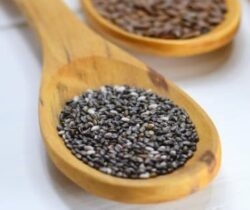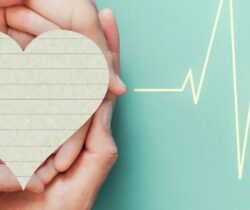If you are unsure whether you have normal cholesterol levels, it might be worth getting this checked. Not only does high cholesterol have no symptoms, but it is a fairly common condition in Australia, with health authorities concluding that approximately half the population have high total cholesterol(Source: Better Health).
In this article, we’ll cover what normal cholesterol levels in Australia look like, as well as what high cholesterol levels mean for you.
What cholesterol levels are considered normal in Australia?
The recommended blood cholesterol targets rely on a number of factors that are based on your personal risk. For the general healthy population, a total cholesterol of less than 5.5 mmol/L, LDL less than 2.0mmol/L and HDL of greater than 1.0 mmol/L is advised.
If you are considered at high risk for chronic diseases like diabetes, heart disease and stroke, a total cholesterol of less than 4.0 mmol/L, LDL of less than 1.8 mmol/L and HDL of greater than 1.0 mmol/L is recommended.
(Source: Better Health)
What is cholesterol?
Cholesterol is a type of fat that is produced by your liver, as well as most of the cells in your body. It is carried through the body by the lipoproteins in your bloodstream, and it does many things including;
- Building the structure of cell membranes
- Make testosterone, oestrogen and adrenal hormones
- Help your metabolism, so your body can perform essential tasks such as producing vitamin D
- Produce bile acids to help with fat digestion and the absorption and nutrients
What is the difference between good and bad cholesterol?
The difference between good and bad cholesterol is the density of the lipoproteins that carry them.
- Low density lipoprotein (LDL) cholesterol is considered bad because it tends to linger in the blood and cause health problems by affecting the arteries
- High density lipoprotein (HDL) cholesterol is considered good because it results in the removal of excess cholesterol from your body’s cells, keeping your cholesterol at a manageable level
Different kinds of foods have different kinds of cholesterol, and your aim should be to eat foods that contain HDL cholesterol and avoid foods that are high in LDL cholesterol.
Why is high cholesterol a concern?
High cholesterol occurs when it builds up in the blood to a level where it can cause harm. This is because fatty deposits start to develop in the arteries, causing them to harden and narrow, which then makes it harder for your organs to get the blood and oxygen that they need.
If left unchecked, high cholesterol can lead to heart disease and stroke. However, high cholesterol alone doesn’t have any symptoms. So, if you have risk factors for cholesterol, it is important to talk to your doctor so they can check your cholesterol levels.
What are triglycerides?
Triglycerides are another kind of fat that is transported in the lipoproteins in your bloodstream in order to be used as energy by your body’s cells. However, like with LDL cholesterol, they can build up in your blood and result in health conditions such as heart disease.
If you eat more energy than you burn through physical exercise, the excess energy will be converted into fat, which can lead to high triglycerides and high cholesterol. That is one of the many reasons why a healthy diet and exercise go hand in hand when it comes to lowering cholesterol.
How do I lower bad LDL cholesterol levels?
You can lower your cholesterol through a healthy lifestyle that combines a healthy diet with regular physical exercise. The Life! program provides you with the information and resources that you need to build up the healthy lifestyle that is ideal for you.
Dietary factors
| Healthy Diet Tip | Foods to Eat or Avoid |
| Avoid foods with high levels of saturated and trans fats, as they raise the levels of LDL cholesterol in your blood. | Avoid the following:
|
| Eat more polyunsaturated and monounsaturated fats. These kind of fats help your body get the essential fatty acids and vitamins that it needs without significantly raising your LDL levels. | Polyunsaturated fats to eat more of:
Monounsaturated fats include:
You can find both polyunsaturated and monounsaturated fats in:
|
| Eat more soluble fibre, which reduces the absorption of cholesterol in your blood and your small intestine. Additionally, soluble fibre helps by slowing down your digestion, making you feel fuller for longer. | Foods that are high in soluble fibre include;
|
| Eat more plant sterols, which are compounds that lower LDL cholesterol. Adding plant sterol-enriched foods to your diet is the most effective dietary change you can make to reduce your LDL cholesterol.However they’re not recommended for pregnant or breastfeeding women (Source: Health Direct). | Plant sterols occur naturally in foods such as;
They are also added to certain packaged foods including;
|
Exercise factors
Exercise (particularly vigorous aerobic exercise) is a great way to increase levels of HDL cholesterol while reducing your weight and body fat.
Starting an exercise regime, or returning to exercise after a long break, can be a bit daunting. However, any physical activity is better than nothing, and you can start slow and gradually build yourself up.
It is recommended that;
- People aged 18-64 years do 30 to 60 minutes of moderate-intensity physical activity on most days of the week.
- People aged 65 years and over aim for a total of 30 minutes of moderate physical activity on most days.
- Both should aim to do resistance training and muscle toning exercises twice a week as well (with weights, resistance bands or body weight)
(Source: Health Direct)
Moderate intensity exercise increases your heart rate and breathing, but still allows you to breathe and talk normally. Vigorous intensity exercise makes it harder to breathe and talk normally.
How the Life! program can help you
The Life! program can help you manage your cholesterol by supporting you through your journey towards a healthy lifestyle. This is achieved by helping you eat a healthy diet, perform regular physical exercise and more.
Life! is a free healthy lifestyle program that helps you improve your eating habits, increase your physical activity and manage stress. You can choose from a group course or the telephone health coaching service.
Our experienced health professionals will help you make small changes to your lifestyle so that you can achieve your health goals and reduce your risk of type 2 diabetes, heart disease and stroke.
The Life! program is funded by the Victorian government and managed by Diabetes Victoria. You can check your eligibility for the program here.
Sources
https://www.csiro.au/en/research/health-medical/nutrition/cholesterol-facts
https://www.betterhealth.vic.gov.au/health/conditionsandtreatments/cholesterol
https://www.healthdirect.gov.au/how-to-lower-cholesterol
https://www.betterhealth.vic.gov.au/health/conditionsandtreatments/cholesterol
https://www.betterhealth.vic.gov.au/health/conditionsandtreatments/triglycerides
Reviewers:
Elleni Kaias, Accredited Practicing Dietitian | Primary Care Engagement Lead
Kristie Cocotis, Head of Prevention and Health Promotion
Sarah Dubé, Strategy and Engagement Lead
Ria Cheripuram, Digital Communications Officer
Tegan Kohlman, Communications and Social Marketing Officer






